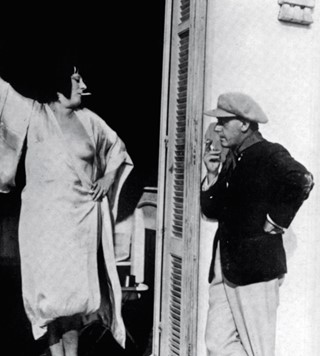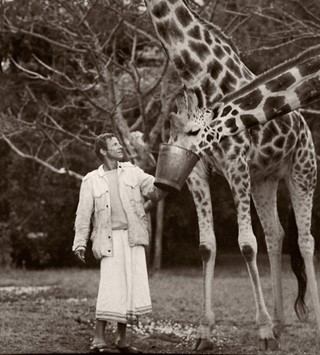To coincide with an exhibition of his work in London, Norman Seeff recalls his encounters with The Stones
- TextBelle Hutton
Moving from South Africa to New York – via London, where the only downside was the weather, he says – saw multi-platform artist Norman Seeff undergo a radical career change. Having been an emergency doctor in Apartheid-era Soweto, when he found himself in New York in the early 70s he began pursuing photography. At downtown counterculture bar Max’s Kansas City Seeff would rub shoulders with the likes of Patti Smith and Robert Mapplethorpe and would photograph them too, capturing them in intimate, domestic settings. “It was horrible for a year and a half because I got no work, and then I met a man who became my mentor,” Seeff remembers. “The artwork for my first album cover shoot – Robbie Robertson and The Band – became hugely successful. Suddenly I was the rock photographer in New York who got work.”
As creative director at United Artists Records in LA for two years, Seeff was responsible for some of the era’s most seminal album covers, creating artwork for the likes of Ike & Tina Turner, Carly Simon, Joni Mitchell (with whom he has recently released a book) and James Taylor. Throughout his decades of working with artists from the world of music and beyond, Seeff has honed a unique method of capturing his subjects in both still and moving images. A collaborative and spontaneous “creative communication”, Seeff engages the artists in conversations and the sessions are filmed and photographed. These sessions have over the years become “an intense process of creating a vulnerable and powerful creative relationship”, the aim of which is to explore creativity. “I would push artists beyond their comfort zones to create something new, and genuine artists would rise to the occasion and go into some amazing places of authentic creativity.”
One night in the early 1970s – while he was honing this singular way of conducting sessions, but just prior to when he started filming as well as photographing his subjects – Seeff shot The Rolling Stones. Then at the height of fame, the band were releasing Exile on Main Street, their first record via their own label. Seeff was responsible for the photography and art direction of the album that came to be one of the band’s most experimental and critically acclaimed. Here, as an exhibition opens at Proud Central showcasing the photographic output of these sessions, Seeff remembers the midnight shoot.
“I did about three sessions with The Rolling Stones. At that point my career had taken off in New York and I’d been asked to fly to LA to become creative director of a record company called United Artists. I was at United Artists when I got a call from The Stones’ management asking me to do the Exile on Main Street album, and they wanted me on both sides – so doing the photography and the design. So I was given a day to step outside of my role and Mick Jagger had the idea of – after seeing a photograph of the Ballets Russes defecting to the United States down the ramp of a plane – them coming down, or on dockside, defecting to France in protest of the tax laws. We couldn’t take The Rolling Stones to a dock because we would have had to fight off a thousand people, so we had one day and we built – this being Hollywood, with set builders and stuff – a dockside set.
“We started the shoot at midnight, and I think The Rolling Stones had been in the studio all day. We’d been drinking gallons of cheap wine that Mick Jagger hated when he came. He said ‘great session, terrible wine’. So we were all a little stoned by the time they arrived, but I have to say that Keith was more stoned than we were. We realised everything was OK, Mick was absolutely professionally responsible, as was the whole group. In fact what I’ve found with top groups: they may be out there and they may party, but when it comes to work, there’s a work ethic that is very impressive.
“We ended up having an incredible session in the studio and I don’t know how many hours it was, and at one point one of my assistants dressed up as an extra on the set and turned around and tried to kiss Mick. The two of them tumbled down and I happened to be right there and I got the whole fall. That falling down became one of those concertina postcard things that you could buy at travel kiosks. It was this whole sequence that was put into the album, and people could tear the postcards out and put a stamp on and write to people.
“They asked me to come back and I hung out with them at the house and we did a couple of the other sessions, just more Keith against a grey background – it needed nothing, it’s just such an iconic rock and roll shot. Unfortunately when I did The Rolling Stones I was not filming. I found Mick incredibly present – this duality of a genuine creativity, but at the same time that ability to be responsible for delivering whatever needs to be delivered. Even though we started at midnight and everyone had been very heavily engaged all day when it came to working, it was incredibly professional. Mick is very aware creatively of what’s going on outside of himself. That makes for someone who participates in a very co-creative, collective way. I have to say it was effortless to work with them – no diva qualities, just this is what we’ve got to do, let’s get down and dirty and work. I’m not saying it was a passive thing, he actually gives a lot creatively because he’s got that imagination and that willingness to jump in fully to whatever’s happening.”
Sessions in Sound: Photographs by Norman Seeff runs at Proud Central from November 23, 2018 until January 13, 2019.















